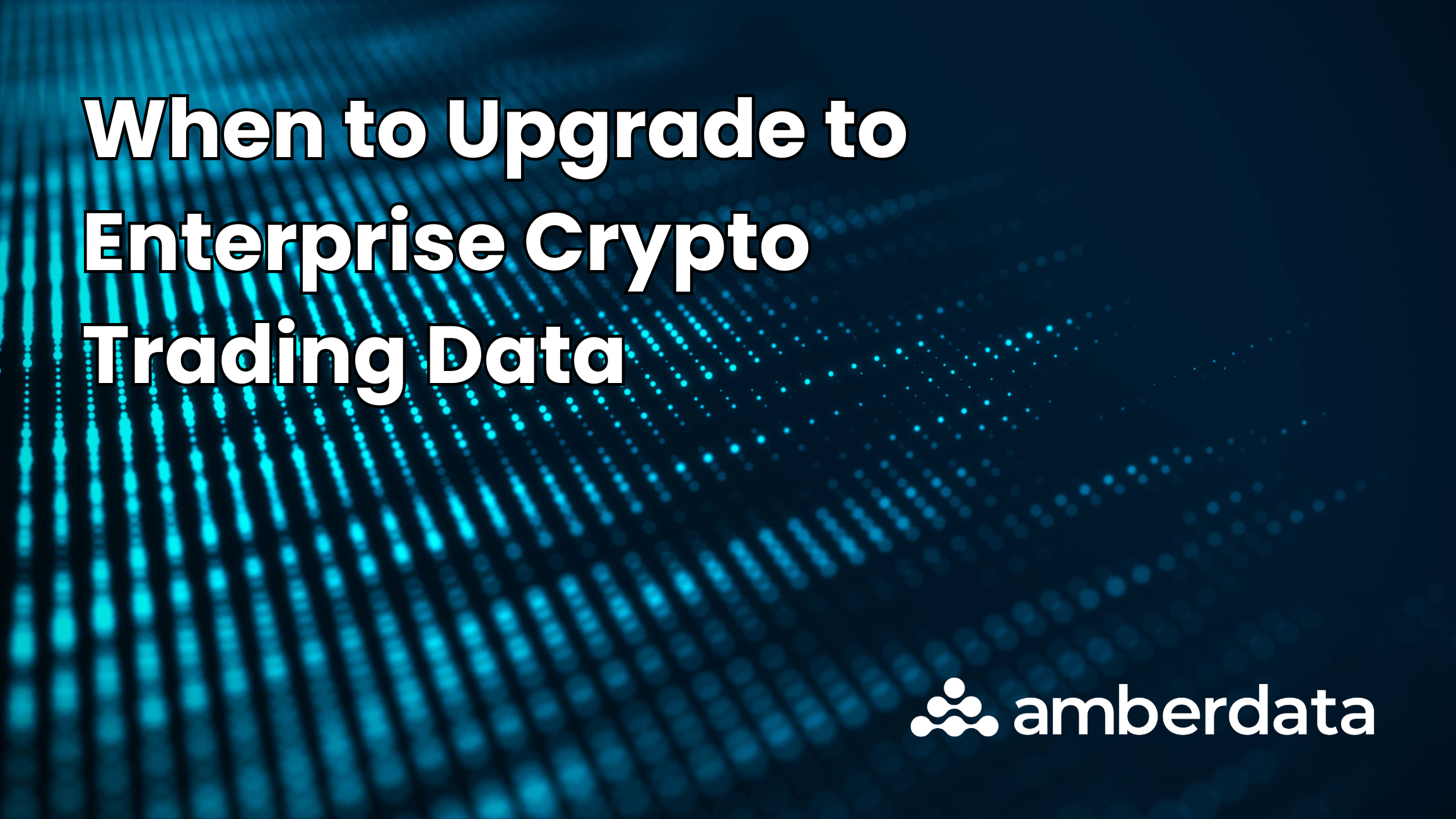How Do You Know When It's Time to Invest in Enterprise Crypto Trading Data?

The signal strength of mainstream investor demand for digital assets after the Securities and Exchange Commission approved Bitcoin ETFs for over a dozen applicants on Jan. 10 is an auspicious sign for the growth of institutional trading starting in Q1 of 2024.
In less than two months, Bitcoin ETF issuers have bought a sizable 4% of the 19.6 million on-chain BTC in existence.
As regulated investors compete for the base layer tokens, the fast-growing blockchain crypto trading industry widely expects the scarcity shock to ratchet up long-term price support levels.
The Bitcoin ETFs bringing Bitcoin spot price exposure to Wall St. investors may soon be followed by U.S. banks providing crypto asset custody for clients.
“The House Financial Services Committee voted to reject an SEC accounting rule that prevents US banks from providing digital asset custody." (Ledger Insights, Mar. 1)
With the growing stakes and increasing competition, data-driven decision-making for institutional investors and traders is one key to cutting through all the noise blockchain is generating and getting the data your business needs to execute or automate decisions.
Data Needs Across Departments
Getting the specific enterprise crypto trading data you need for your business may be as important as not losing the private keys to digital assets in your self-custody.
Without those keys, your assets are out there somewhere with no way for you to use them. Without the right crypto data and analytics, it’s difficult for teams to make informed decisions and keep up with the rapidly changing market.
Trading Teams: Digital asset trading is notorious for its rapid pace, and meeting that pace requires trading data that keeps up with the speed of the market. Institutional-grade data solutions help teams improve trading strategies with actionable price quotes and the advanced market analytics tools needed for high-volume and high-frequency trading.
Analyst and Research Teams: Researchers and analysts need deep historical crypto data to conduct in-depth market analysis and identify emerging trends. Even if your firm is not moving as fast as high-frequency traders, an aggregated API allows analysts to benchmark crypto prices with reference rates across every exchange you trade on.
Compliance Teams: Meeting regulatory and compliance standards requires on-chain data and trading data for every centralized and decentralized exchange relevant to your organization. Without it, compliance teams are unable to ensure that the business isn’t associated with known bad actors or generate the reports necessary to demonstrate tax and regulatory compliance.
Risk Management Teams: Assessing market risk, credit risk, and operational risk at the institutional level requires comprehensive risk modeling for trading strategies using time-series normalized data to stress test and perform scenario analysis for a fund or trading idea.
Signals Your Team Needs A New Crypto Data Solution
Whether it’s for analysts, traders, compliance officers, or risk managers within a business, recognizing when institutional teams need better or additional data isn’t always easy. These are some of the common signs that your organization needs a better crypto data solution:
Inconsistent Performance: If your business has identified patterns of underperforming trades and missed arbitrage opportunities, it can be a sign that your team doesn’t have enough insight into the market’s dynamics. In this case, it may be time to find a data solution that offers the robust historical price data needed to thoroughly backtest trading strategies and build out automated strategies for spotting and executing arbitrage trades across exchanges.
Compliance Concerns: Maintaining compliance in the crypto space is a difficult task due to the relative anonymity in much of the industry. If your team is finding it difficult to procure the information needed to keep up with digital asset regulations as they change, it may be time to reconsider your data sources.
Inefficient Resource Allocation: Gathering data from several individual sources can quickly become both an arduous task and a drain on resources. It can also lead to missed opportunity costs and bloated vendor lists that an aggregated crypto data solution can solve.
Strategies for Addressing Gaps in Data Coverage
When you’ve noticed any of the above signals of needing a new data solution, the next step is to assess your existing data sources for relevance, scope of coverage, and accessibility to find the gaps and inefficiencies.
Next, it’s wise to partner with a data aggregation solution that offers comprehensive and specialized coverage. This helps institutions consolidate their vendors, gain an edge in the market, and efficiently manage risk and compliance with granular datasets and advanced analytics tools.
To learn more about how aggregated data providers like Amberdata support the needs of institutions with enterprise-level crypto data, we encourage you to explore our library of related content and download our Use Cases for Banks Report.
Related Content
Amberdata
Amberdata is the leading provider of global financial infrastructure for digital assets. Our institutional-grade solutions deliver data, analytics and comprehensive tools and insights that empower financial institutions to research, trade, and manage risk and compliance in digital assets. Amberdata serves as a...
